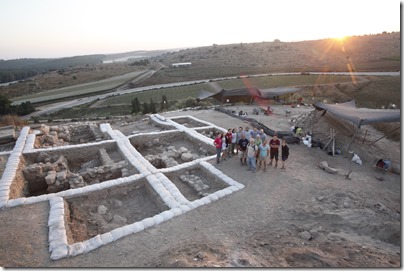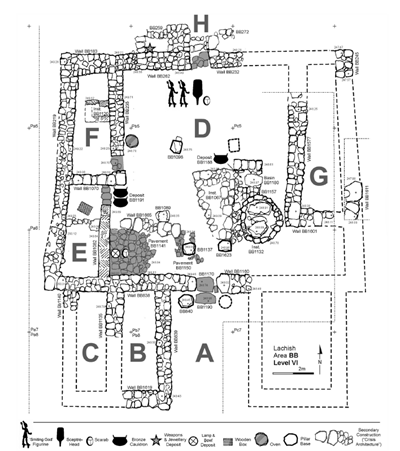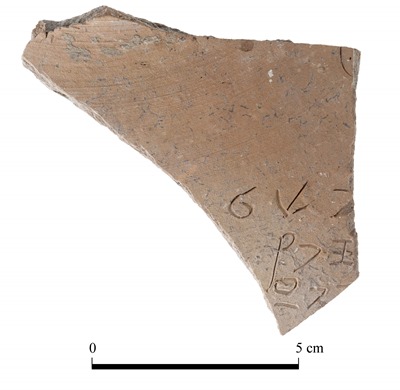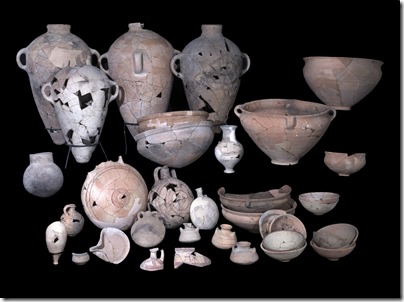If you don’t pay attention, you would think they’re finding all kinds of first-century streets in Jerusalem. But it’s the same one, again and again. The story this week, based on a journal article in Tel Aviv, is that the Siloam Street/Stepped Street/Pilgrim’s Path was built by Pilate. The date is based on the most recent coin, from AD 30/31, found in the fill under the pavement. Leen Ritmeyer rejects the study, saying that the road was actually built by Herod Agrippa II. That last link has a nice map that shows the location of the Herodian/Pilatian/Agrippian Road.
A three-year salvage excavation near Beth Shemesh uncovered a Byzantine Church with an inscription mentioning a “glorious martyr.” The mosaics are quite well-preserved, and there is an intact underground burial chamber. Some of the artifacts are featured in a new exhibition at the Bible Lands Museum in Jerusalem.
Excavators have found a second monumental gate at Hacilar.
These reports from Beirut are from last year, but I did not see them then:
Rachel Bernstein provides an update on the Temple Mount Sifting Project since its recent reboot and relocation.
Israel Finkelstein responds to the “discovery that changes everything we know about biblical Israel.”
Artificial intelligence is better at deciphering damaged ancient Greek inscriptions than humans are.
The ArcGIS Blog interviews Tom Levy and one of his students about their use of GIS and 3D modeling in their work in the copper mines of Faynan.
Officials in Thessaloniki are arguing about what to do with a “priceless” 6th century AD Byzantine site found during work on a subway tunnel.
Spanish experts have replicated for Iraq two Assyrian lamassu statues previously destroyed by ISIS.
Dirk Obbink denies the charges against him of selling items owned by the Egyptian Exploration Society.
Two scholarships are available for students interested in participating in February’s excavation of Timna’s copper mines.
An international conference entitled “Philistines! Rehabilitating a Biblical Foe” will be held on Nov 17 at Yeshiva University Museum. Registration is required.
‘Atiqot 96 (2019) is now online, with reports on excavations at Rosh Pinna, Mazor, and el-Qubeibe.
Biblical Israel Ministries and Tours has released the 16th video in their series, “It Happened Here.” This one features life lessons from Beth Shean.
Jim Hastings shows how he built a model of a gate of Ezekiel’s temple.
Ferrell Jenkins shares photos from his 1970 tour of Iraq.
Aron Tal reflects on the remarkable return of the ibex. There was a day, apparently, when there were no ibex to be found at En Gedi.
HT: Gordon Franz, Mark Hoffman, Agade, Ted Weis, Joseph Lauer, A.D. Riddle, Steven Anderson



